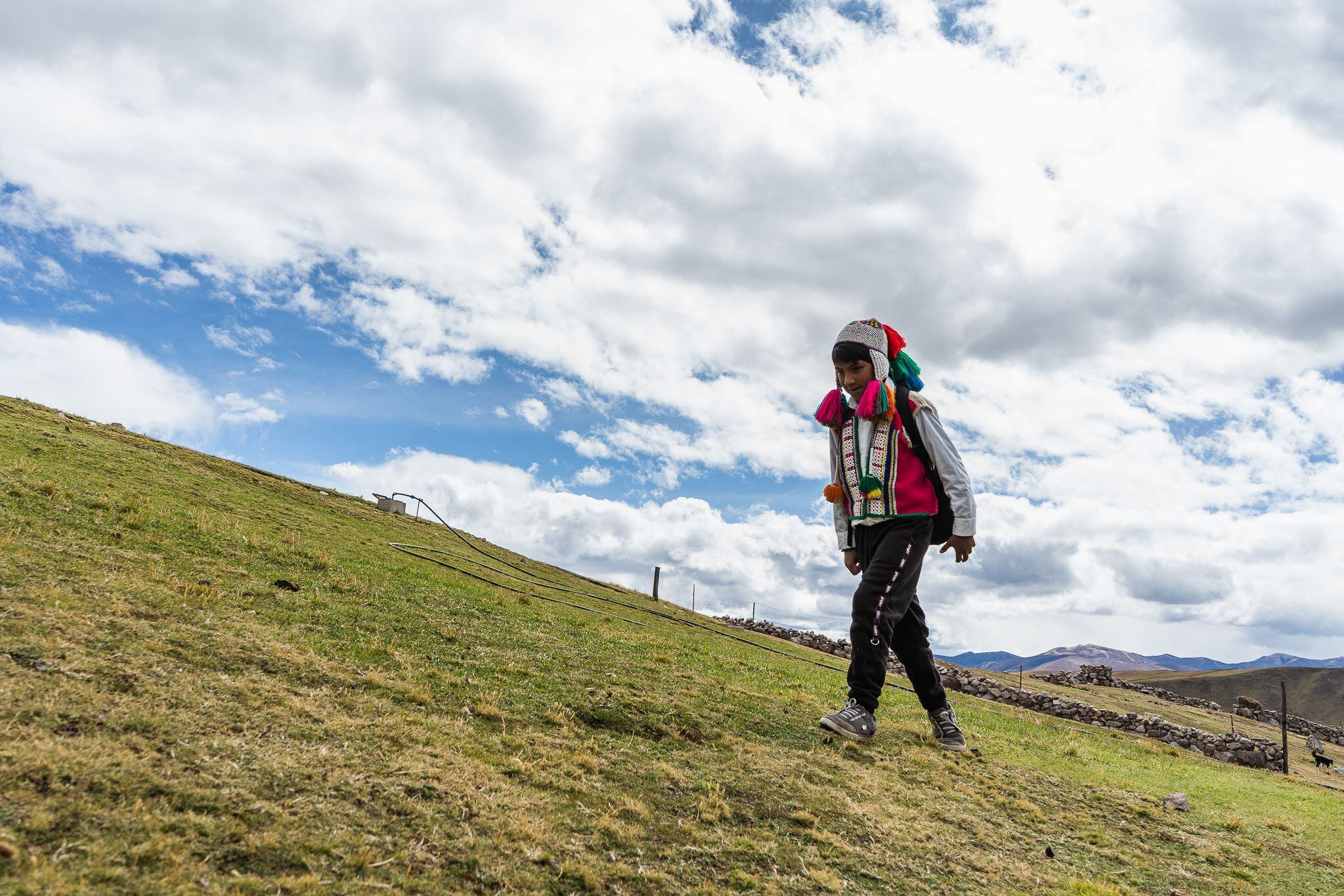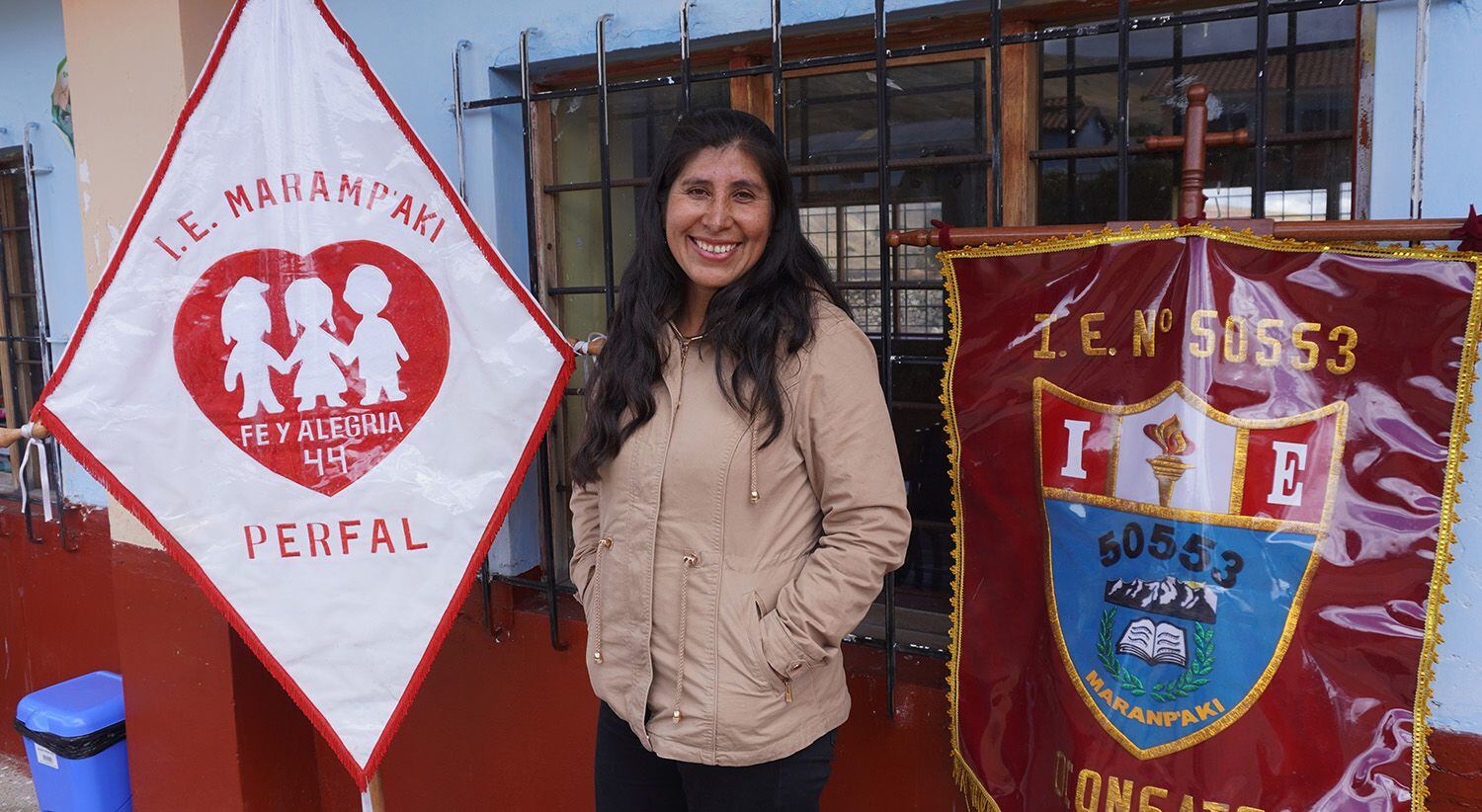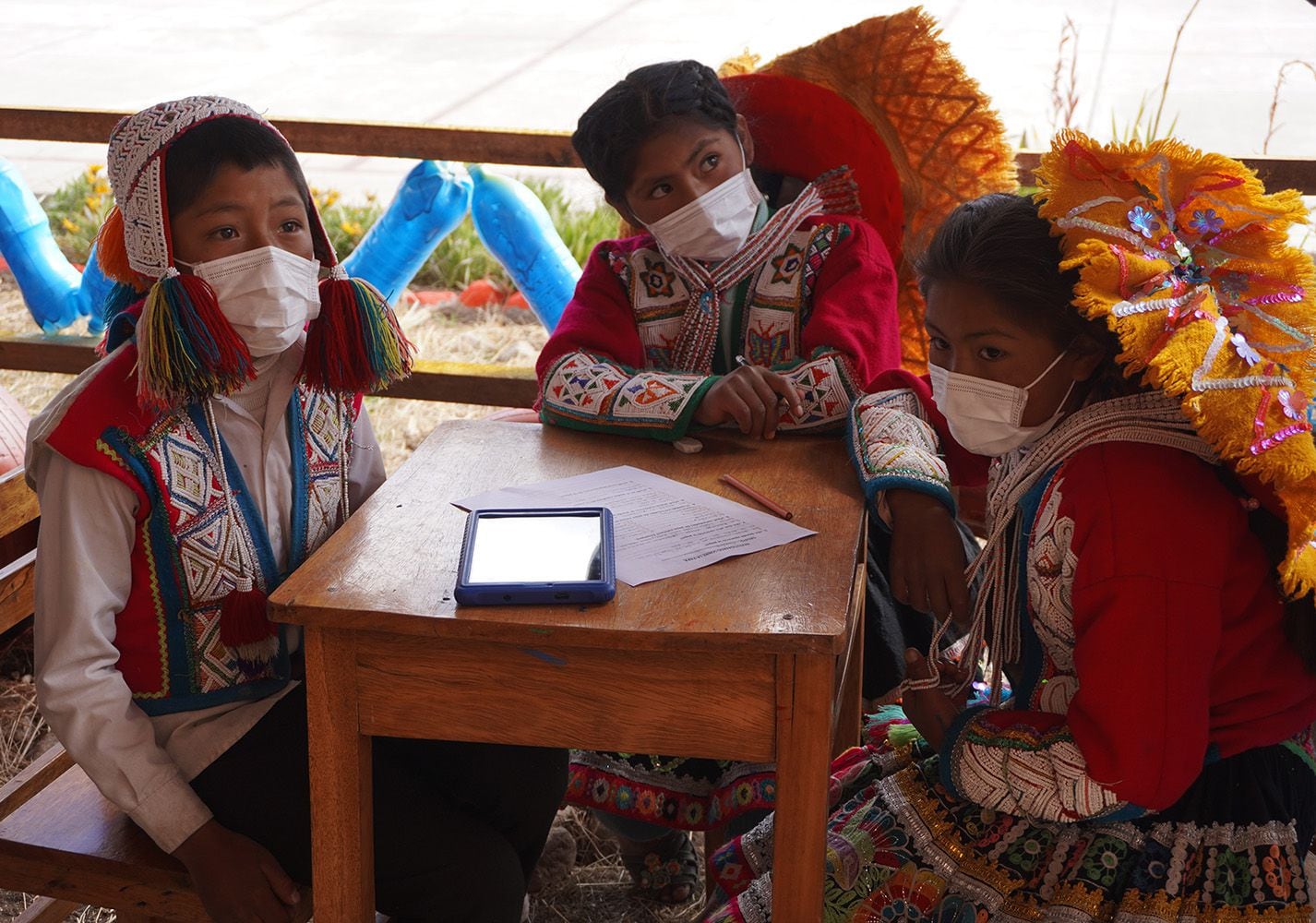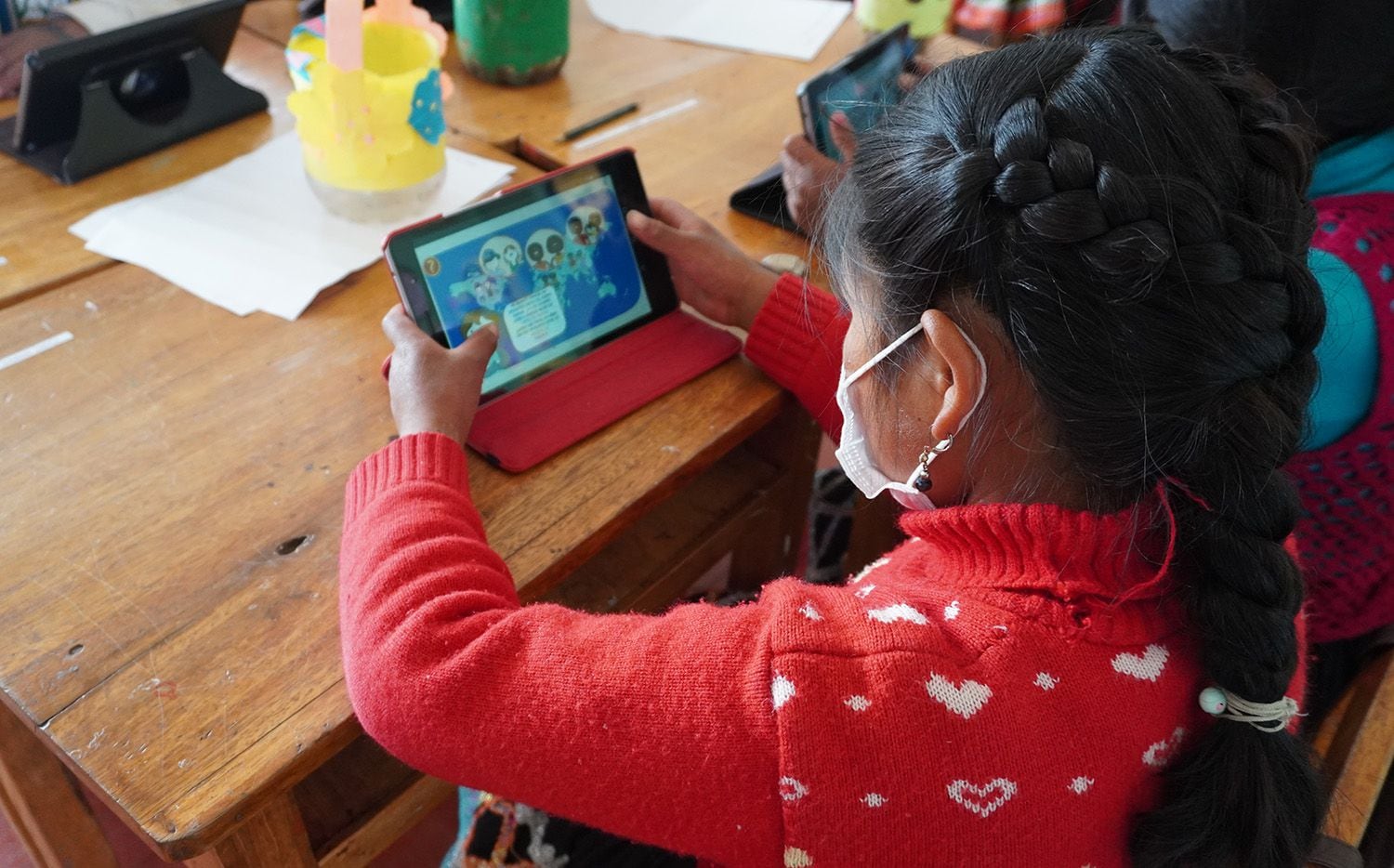Néstor Pacsi is 11 years old and is a child who, without knowing it, experiences difficulties. From Monday to Friday, in the mornings, he walks for more than 30 minutes from his house in Marampaki, Cusco, to his school, which has two teachers for 20 students. Just like him, thousands of young people throughout Peru travel long trails in the cold and rain to receive math and letters lessons, with which they will seek a better future for themselves and their families.
Our little protagonist lives in a community located in Quispicanchi, Cusco, at more than 4,300 meters above sea level. He has four brothers and during 2020 and 2021, the toughest years of the COVID-19 pandemic, he had to ‘take virtual classes’ from home.
READ ALSO: Digital divide in Peru: How are we doing and what do we need to shorten it?
Néstor remembers that in the last two years he had to walk to strategic points on top of the hills to capture a signal and thus be able to join group calls on WhatsApp or one-on-one calls with the teacher. The limited infrastructure at the national level makes it impossible to Internet quality for such remote areas.
Another complication was that many students had to who also had classes at similar times.
READ ALSO: Careers of the future: universities prepare degrees in artificial intelligence and nanoscience
In simple terms, the digital divide is a concept that is defined as between different social groups.
How is the situation in Peru? Although there is no recent public report on the matter, the analysis carried out in 2020 by the National Institute of Statistics and Informatics (INEI) warns us of a worrying situation. Until that year, But since Peru is not a single piece of information, it must be divided by areas of residence to have it clearer: area urban (46.9%) and rural (8.8%).

The numbers speak for themselves: there is a strong digital divide between rural and urban areas. This, in turn, is accentuated if we pay attention to how the percentages are divided by departments.
LOOK: Facebook will prioritize content of interest to the user on the main page
In the Cuzcothe region where Néstor Pacsi and his family live, until 2020 , far behind the .
If we look up, the situation in Latin America is no different. According to the report “Rural Connectivity in Latin America and the Caribbean – A bridge to sustainable development in times of pandemic” -also from 2020-, at least 77 million people do not have access to quality Internet in rural areas.

Cusco, a case of digital divide
As we previously reviewed with the statistics, the capital of the former Inca empire is also .
During the first two years of pandemic was not the exception and this is how Rosmery Bellido, director and teacher of the Educational Institution Maramp’aki Fe y Alegría 44, Néstor Pacsi’s house of studies, explains:
“when the pandemic hit . Since they had access to the phone, they were afraid of being struck by lightning. Despite all this, children and parents put their efforts and will to be able to go to the hills to pick up a signal. From then on, I connected and called them daily. We work from 8 a.m. to 1 p.m. at different times and by groups”.
The teacher confesses that the lessons they were for group calls from “maximum three people” and that during this period it became evident the digital divide. However, the educator highlights that thanks to the pandemic, children “have accessed more and more digital resources”. They are tromes in it, he affirms.
Teachers also had to adapt to the virtuality quickly, so as not to be left behind. It was difficult for more than one of them and that happened with Professor Bellido. “I already knew the basics, WhatsApp and the individual call. “, Add.
LOOK: Michael Sayman: “Facebook and Google are cloning our brains”
An immense world within everyone’s reach
Now, the Maramp’aki Fe y Alegría 44 Educational Institution has benefited for more than 10 years by “Committed to Education”, the Fundación Telefónica project consisting of the with which it seeks to improve student learning, empower teachers in digital matters and promote dynamic classes with the use of technology.
“Children get excited about the Internet and WiFi [y las tablets]. . They are motivated to learnr”, he reveals to this newspaper.
In addition, the teacher highlighted that they currently combine the use of tablets and traditional teaching, since she considered that “the machine cannot replace us”.
In addition to this, he comments that despite all efforts, the impact of the pandemic in lower degrees has been strong. “We are working from 0 in initial, with the challenge that they can learn to read. Most of all literacy so that they can continue with the other activities in first and second grade”.
On the other hand, Néstor Pacsi tells us for sure that the tablets help him “much” a “look for information every day” and that with them he can solve his tasks that he is given in his class.
Specifically, the “Committed to Education” project grants tablets and access to its different platforms and virtual resources to different rural schools. Thus, the face-to-face classes they mingle with technology and make the most of both sides. For example, children can receive explanations about climate change, while they complement the lesson with explanatory videos on the subject..
The aid continued throughout 2020 and 2021, but with difficulties in terms of distribution and use of tablets.

“I would like to continue using the tablets, I think you learn more. My parents agree with its use and tell me to improve more. I like communication and mathematics. When I grow up I want to work with technology, maybe some engineering”, Néstor tells us and it sounds like a very firm promise.
“Committed to Education”
The project has been carried out in rural classrooms in Peru for more than 10 years and these are some data on its scope:
Source: Elcomercio
I have worked as a journalist for over 10 years and have written for various news outlets. I currently work as an author at 24 News Recorder, mostly covering entertainment news. I have a keen interest in the industry and enjoy writing about the latest news and gossip. I am also a member of the National Association of Journalists.

:quality(75)/cloudfront-us-east-1.images.arcpublishing.com/elcomercio/5UO65BVGNBCLJGS57QCIUPQIYM.jpg)





:quality(75)/cloudfront-us-east-1.images.arcpublishing.com/elcomercio/DQ4MLCPEJ5D5NC6BFXZJ37ENK4.png)

:quality(75)/cloudfront-us-east-1.images.arcpublishing.com/elcomercio/KHRSVXMA7FDZDJQ4YRQJMTBDDM.jpg)
